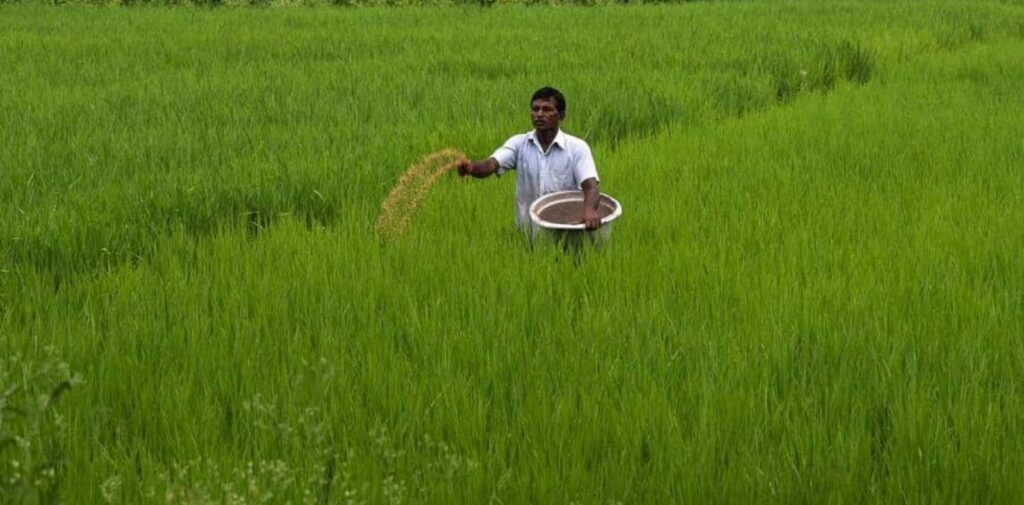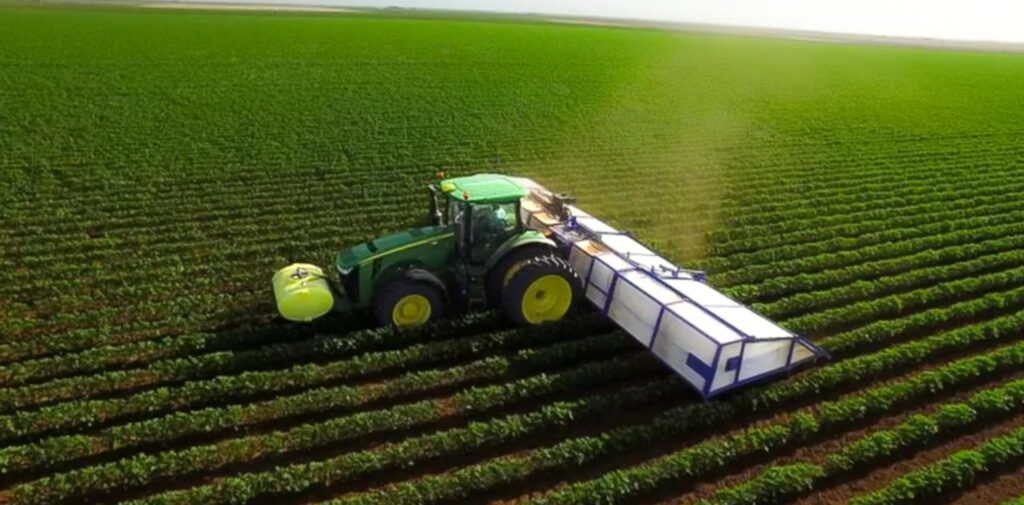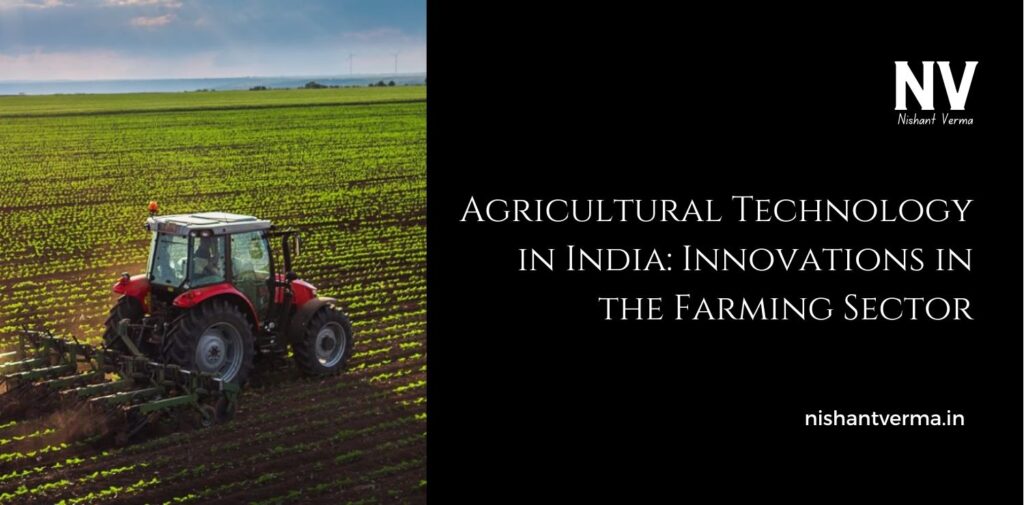Agriculture has always been the backbone of India. For centuries, Indian farmers have worked hard to grow crops and feed the population. However, as the world changes, farming practices in India have also evolved. This change is largely due to the growth of agricultural technology, which is helping farmers grow more food, use resources wisely, and make their work easier and more profitable.
In this article, we will explore how agricultural technology has changed over the years and how it is helping India’s farmers. We will also look at some of the key innovations that are making farming in India smarter, more efficient, and more sustainable.

The Importance of Agriculture in India
Before diving into the details of technology in farming, let’s first understand how important agriculture is in India. Agriculture has been an essential part of Indian culture and economy for thousands of years. India is one of the world’s largest producers of crops like rice, wheat, sugarcane, and cotton. Millions of people rely on farming for their income and food.
However, farming in India faces many challenges, such as unpredictable weather, lack of resources, and low crop yields. This is where technology comes in.
What is Agricultural Technology?
Agricultural technology refers to the tools, machinery, and methods used to improve farming. This includes anything from simple tools like tractors and plows to advanced technologies like drones and smart irrigation systems. The goal of agricultural technology is to make farming easier, faster, and more efficient, ultimately helping farmers grow more food with fewer resources.
How Agricultural Technology is Changing Indian Farming
Over the past few decades, agricultural technology in India has made huge leaps. Here are some of the major ways technology is helping Indian farmers:
Improved Irrigation Techniques
Irrigation is the process of providing water to crops. In the past, many Indian farmers relied on traditional methods of irrigation, such as using hand pumps or flooding fields. However, these methods are not very efficient, often wasting water and increasing costs.
Today, new irrigation technologies like drip irrigation and sprinkler systems are helping farmers use water more efficiently. Drip irrigation delivers water directly to the roots of plants, reducing water waste and ensuring that crops get the right amount of water. These methods are especially useful in dry areas where water is scarce.
Use of Drones and Satellites
Drones and satellites are becoming important tools in modern farming. Drones are small flying devices that can capture images of fields from the sky. They help farmers monitor the health of their crops, check for pests, and assess the overall condition of the field. By using drones, farmers can spot problems early and take action before they become bigger issues.
Satellites also play an important role in farming. Satellite technology helps farmers track weather patterns, predict rainfall, and understand soil conditions. This allows farmers to make better decisions about when to plant, irrigate, and harvest their crops.
Genetically Modified Crops (GMOs)
Genetically modified crops are plants that have been changed in a lab to improve their traits. For example, scientists can modify crops to make them more resistant to pests or diseases. In India, genetically modified Bt cotton is one of the most successful GMO crops. Bt cotton has been developed to resist pests like the cotton bollworm, which can destroy cotton crops.
These crops help farmers produce more food while using fewer chemicals, which is better for the environment and human health.

Smart Farm Equipment
Farm machinery has also seen major improvements in India. Tractors, harvesters, and other farm equipment have become more powerful and efficient. Smart tractors are now available, which use GPS technology to navigate fields more precisely, reducing fuel consumption and labor costs.
Some machines can even detect the condition of the soil and adjust their settings accordingly. This ensures that the machine works in the best possible way, helping farmers save time and money.
Mobile Apps and Digital Platforms
The rise of smartphones and the internet has opened up new opportunities for farmers in India. There are now many mobile apps and digital platforms that provide important information to farmers. These apps give farmers advice on weather forecasts, crop diseases, market prices, and more.
For example, the Kisan Suvidha app helps farmers access information on everything from seeds to fertilizers. Similarly, the eNAM platform connects farmers to a national electronic market where they can sell their produce directly to buyers, getting better prices.
Better Seeds and Fertilizers
One of the most important advancements in agricultural technology is the development of better seeds and fertilizers. Scientists in India are working on creating high-yielding varieties of seeds that are resistant to diseases and pests. These seeds are more likely to produce good crops even in challenging conditions.
Fertilizers have also improved over the years. Bio-fertilizers are now being used to provide essential nutrients to the soil while also promoting healthy soil microbes. This reduces the need for harmful chemicals and ensures that the land remains fertile for years to come.
Artificial Intelligence and Machine Learning
Artificial Intelligence (AI) and machine learning are changing the way farmers make decisions. AI can analyze large amounts of data from fields, weather reports, and crop history to provide insights about what crops to grow and when to harvest. For instance, AI systems can predict crop yields and suggest ways to improve them.
Machine learning algorithms are also used in farm equipment to help optimize planting and harvesting processes, making the entire system more efficient.
Benefits of Agricultural Technology in India
The innovations in agricultural technology have brought numerous benefits to Indian farmers. Let’s look at some of the most important ones:
- Increased Productivity: With the help of modern machinery, better seeds, and smart irrigation, farmers can grow more food on the same amount of land.
- Water Conservation: Technologies like drip irrigation help save water, which is especially important in dry regions of India.
- Higher Income: By using technology to increase crop yields and reduce costs, farmers can earn more money and improve their standard of living.
- Sustainable Farming: Many of the new technologies help farmers use fewer chemicals, conserve natural resources, and protect the environment.
- Access to Information: Mobile apps and digital platforms help farmers make informed decisions about everything from planting to selling their crops.
Challenges in Adopting Agricultural Technology
Despite the many benefits, the adoption of agricultural technology in India is not without challenges. Some of the major obstacles include:
- High Initial Costs: Many modern farming tools and technologies require a significant investment, which can be difficult for small farmers to afford.
- Lack of Awareness: Some farmers are not aware of the new technologies available or may not know how to use them.
- Poor Infrastructure: In some rural areas, the lack of internet connectivity and electricity makes it difficult for farmers to access digital tools.
The Future of Agricultural Technology in India
The future of agriculture in India looks bright with continued innovation. More and more farmers are embracing technology, and the government is providing support through various schemes and subsidies. As technology continues to evolve, we can expect even smarter and more efficient farming practices in the coming years.
For example, robots could soon help with planting and harvesting crops, and AI could play an even bigger role in making farming decisions. With the right support, agricultural technology can help India feed its growing population and ensure a brighter future for farmers.
Conclusion
Agricultural technology has revolutionized farming in India. From better irrigation methods to smart machines and mobile apps, technology is helping farmers grow more food, use resources wisely, and earn a better living. While there are challenges to overcome, the future of farming in India is full of opportunities. By embracing innovation and supporting farmers, India can continue to be a world leader in agriculture.




